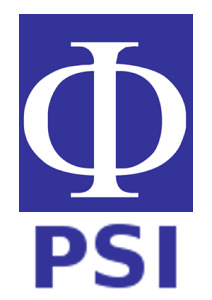
THE LEVEL UNDERSTANDING OF THERMODYNAMIC CONCEPT FOR PHYSICS AND CHEMISTRY UNDERGRADUATE STUDENTS
Abstract
Keywords
Full Text:
PDFReferences
Anderson, E. E., Taraban, R., & Sharma, M. P. (2005). Implementing and assessing computer-based active learning materials in introductory thermodynamics. International Journal of Engineering Education, 21(6), 1168.
Carmichael, P., Driver, R., Holding, B., Phillips, I., Twigger, D., & Watts, M. (1990). Research on Students’ Conceptions in Science—A Bibliography. Leeds: University of Leeds.
Carson, E. M., & Watson, J. R. (2002). Undergraduate students’ understandings of entropy and Gibbs free energy. University Chemistry Education, 6(1), 4-12.
Chi, M. T., Slotta, J. D., & De Leeuw, N. (1994). From things to processes: A theory of conceptual change for learning science concepts. Learning and instruction, 4(1), 27-43.
Chiu, M. H. (2007). A national survey of students’ conceptions of chemistry in Taiwan. International Journal of Science Education, 29(4), 421-452. http://dx.doi.org/10.1080/09500690601072964.
Cox, A. J., Belloni, M., Dancy, M., & Christian, W. (2003). Teaching thermodynamics with Physlets® in introductory physics. Physics Education, 38(5), 433. http://dx.doi.org/10.1088/0031-9120/38/5/309.
Darmofal, D. L., Soderholm, D. H., & Brodeur, D. R. (2002, November). Using concept maps and concept questions to enhance conceptual understanding. In 32nd Annual Frontiers in Education (Vol. 1, pp. T3A-T3A). IEEE. http://dx.doi.org/10.1109/fie.2002.1157954.
Dixon, J. R., & EMERY, A. H. (1965). Semantics, operationalism, and the molecular-statistical model in thermodynamics. American Scientist, 53(4), 428-436.
Jasien, P. G., & Oberem, G. E. (2002). Understanding of elementary concepts in heat and temperature among college students and K-12 teachers. Journal of Chemical Education, 79(7), 889. http://dx.doi.org/10.1021/ed079p889.
Junglas, P. (2006). Simulation programs for teaching thermodynamics. Global J. of Engng. Educ, 10(2), 175-180.
Krummel, R., Sunal, D. W., & Sunal, C. S. (2007). Helping students reconstruct conceptions of thermodynamics: energy and heat. Science Activities, 44(3), 106-112. http://dx.doi.org/10.3200/sats.44.3.106-112.
McDermott, L. (2003). Improving student learning in sciences. Physical Science News, 4(2), 6-10
Mulop, N., Yusof, K. M., & Tasir, Z. (2012). A review on enhancing the teaching and learning of thermodynamics. Procedia-Social and Behavioral Sciences, 56, 703-712.
Niaz, M. (2006). Can the study of thermochemistry facilitate students’ differentiation between heat energy and temperature?. Journal of Science Education and Technology, 15(3), 269-276. http://dx.doi.org/10.1007/s10956-006-9013-7.
Osborne, R., & Wittrock, M. (1985). The generative learning model and its implications for science education.
Pfundt, H., & Duit, R. (1994). Students' alternative frameworks and science education. Institute for Science Education, 4(1).
Sokrat, H., Tamani, S., Moutaabbid, M., & Radid, M. (2014). Difficulties of students from the faculty of science with regard to understanding the concepts of chemical thermodynamics. Procedia-Social and Behavioral Sciences, 116, 368-372. http://dx.doi.org/10.1016/j.sbspro.2014.01.223.
Sozbilir, M. (2001). A study of undergraduates' understandings of key chemical ideas in thermodynamics (Doctoral dissertation, University of York).
Yeo, S., & Zadnik, M. (2001). Introductory thermal concept evaluation: Assessing students' understanding. The Physics Teacher, 39(8), 496-504.
DOI: https://doi.org/10.24114/jpf.v12i1.42330
Article Metrics
Abstract view : 221 timesPDF - 233 times
Refbacks
- There are currently no refbacks.
Copyright (c) 2023 Dewi Wulandari, Destria Roza, Destria Roza, M Aswin Rangkuti, M Aswin Rangkuti, Yul Ifda Tanjung, Yul Ifda Tanjung, Irham Ramadhani, Irham Ramadhani

This work is licensed under a Creative Commons Attribution 4.0 International License.
___________________________________________________________________________________________________________________________________________
Jurnal Pendidikan Fisika
p-ISSN : 2252-732X | e-ISSN : 2301-7651
Organized by The Magister of Physics Education Departement in State University of Medan in collaboration with Physical Society of Indonesia (PSI)
W: https://jurnal.unimed.ac.id/2012/index.php/jpf/index
E : jpfunimed@unimed.ac.id
rajo.hasim@gmail.com (principal contact)

_____________________________________________________________________________________________________________________________________________

This work is licensed under a Creative Commons Attribution 4.0 International License.





